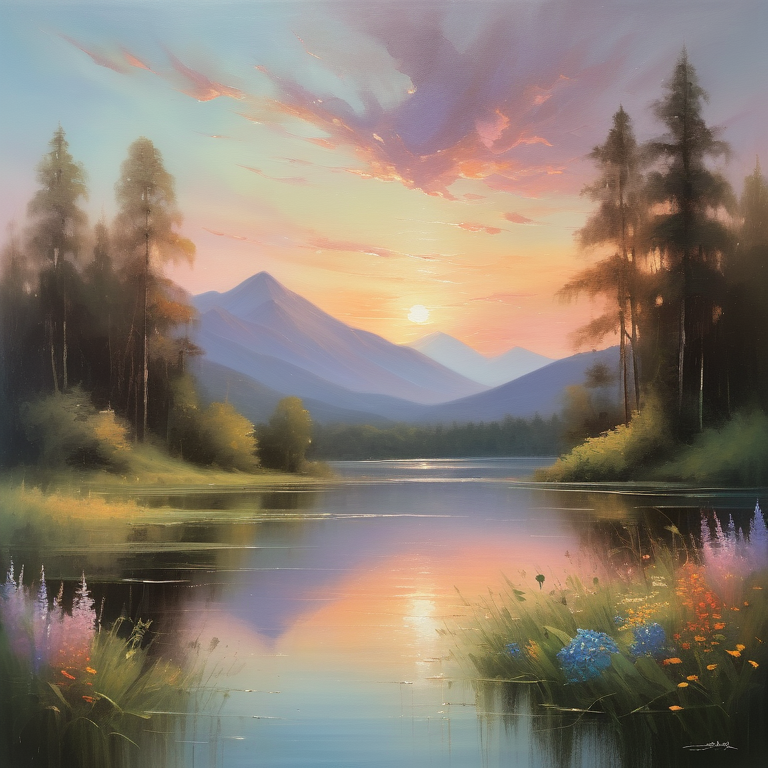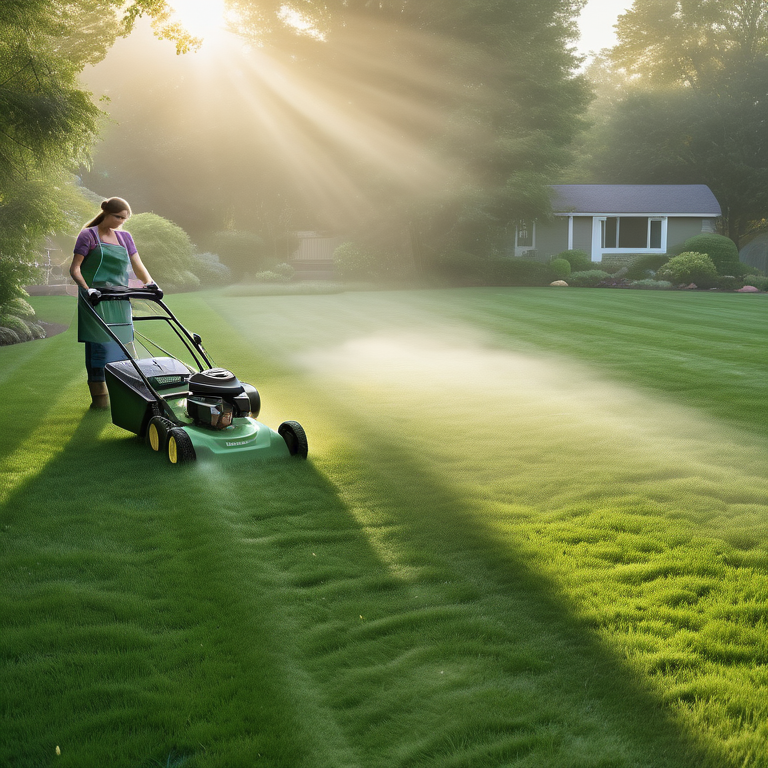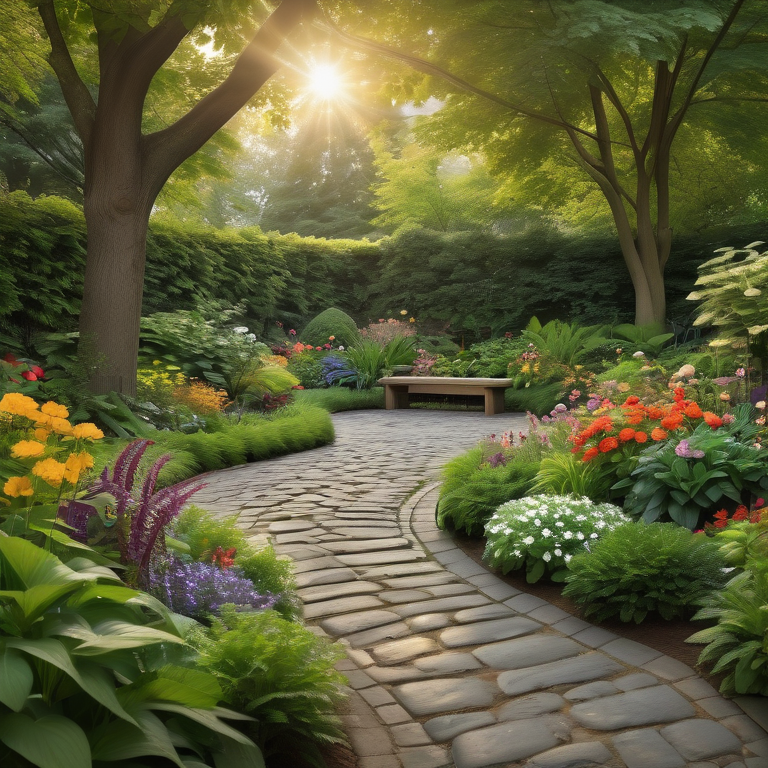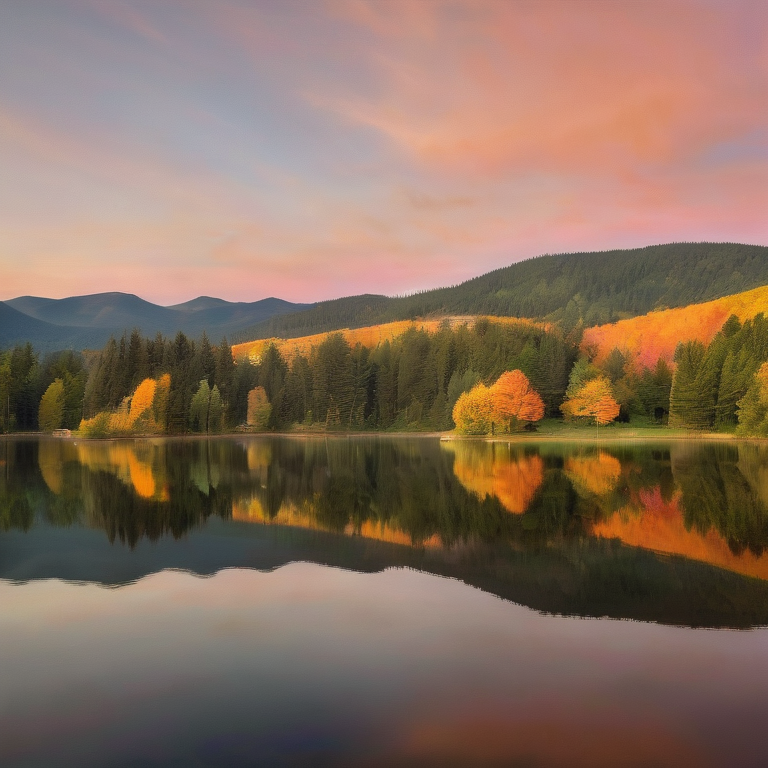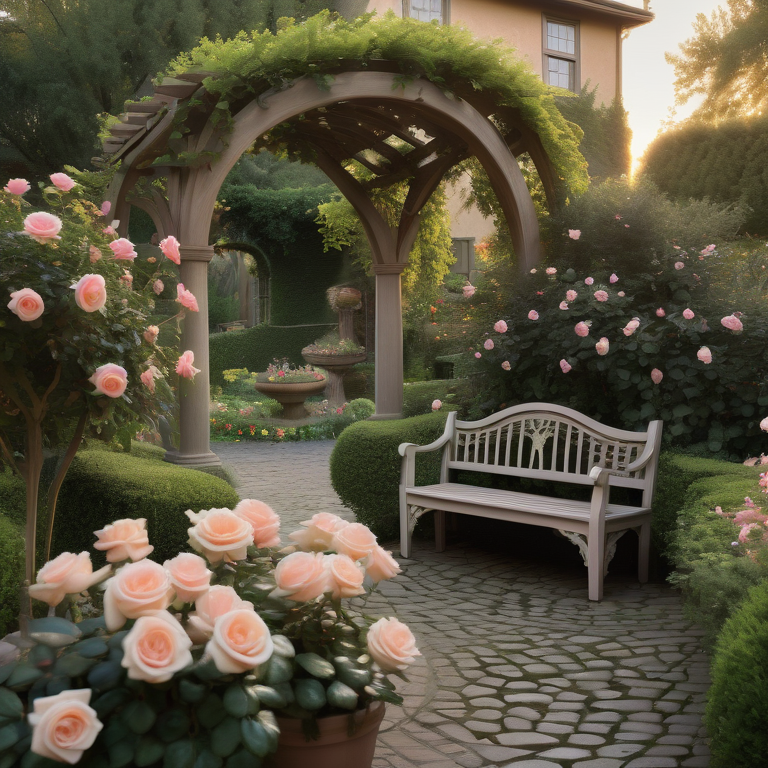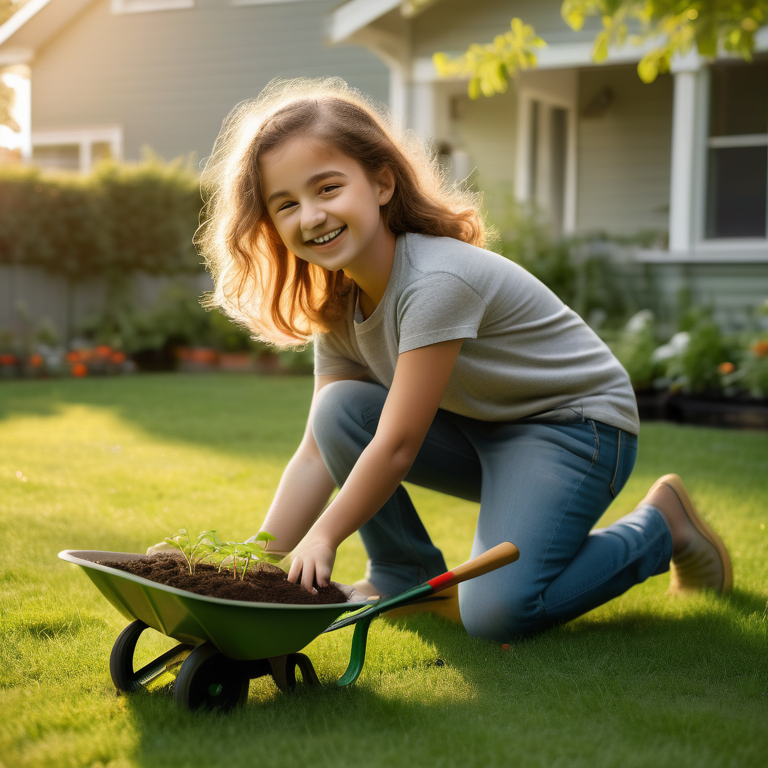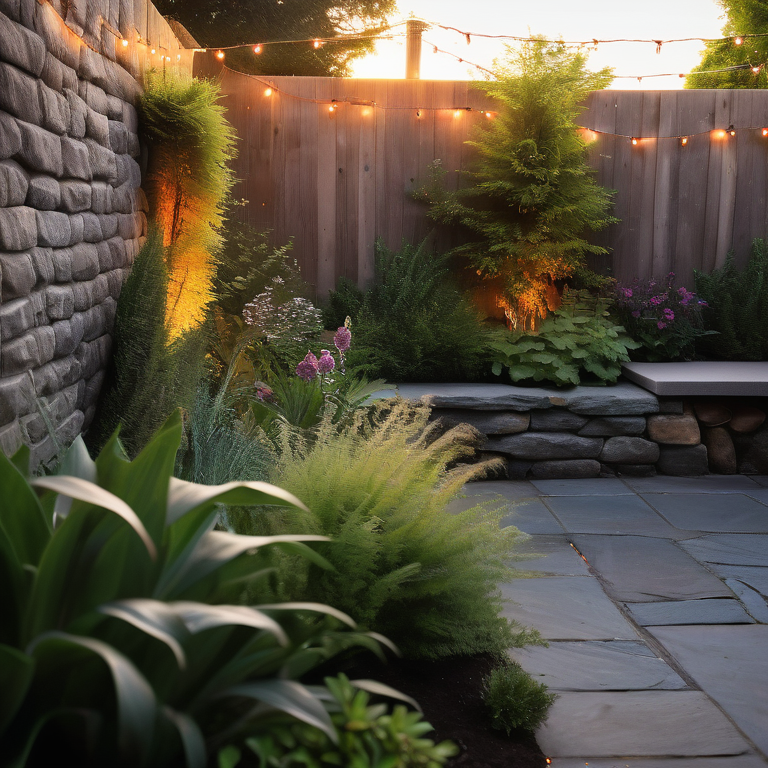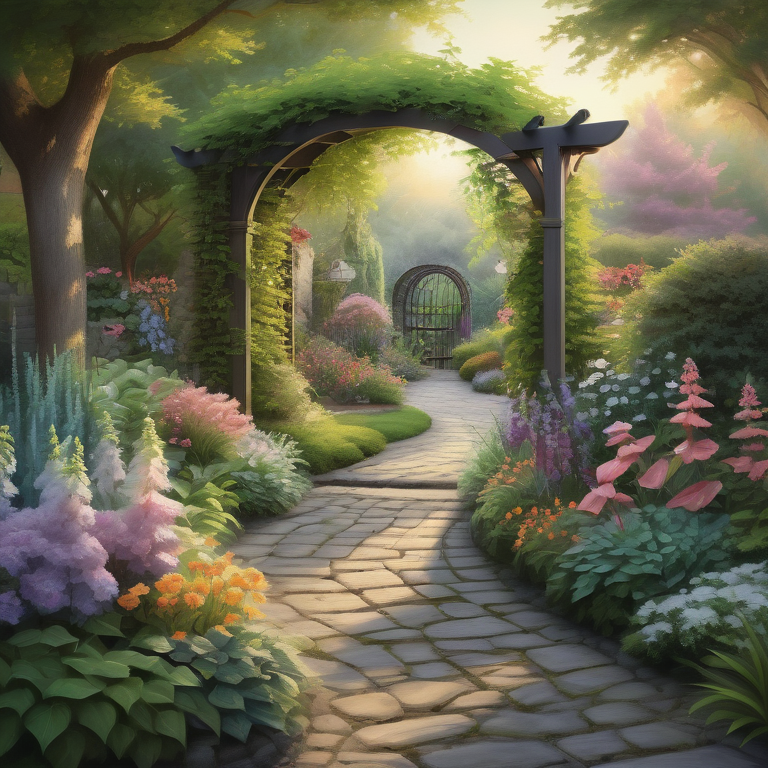What are the key elements to consider when painting a landscape?
When painting a landscape, consider elements like lighting, perspective, composition, color harmony, and focal point. These elements help create depth, mood, and visual interest in your painting. Experiment with different techniques to bring the landscape to life.
Key Highlights
- Landscape painting is a genre of art that focuses on the depiction of natural scenery, including mountains, valleys, bodies of water, and forests.
- It emerged as an independent genre in the Western tradition during the Renaissance in the 16th century.
- The evolution of landscape art can be traced back to ancient Greece and China, where it played a significant role in their respective traditions.
- Landscape painting reached its peak during the 19th century with the Romantic, Impressionist, and Post-Impressionist movements.
- Today, landscape painting continues to be a popular and diverse genre, with artists exploring new techniques and approaches to capture the beauty of nature.
Introduction
Landscape painting is a captivating genre of art that has been practiced for centuries. Artists throughout history have been inspired by the beauty and grandeur of nature, creating stunning works that transport viewers to breathtaking landscapes. From towering mountains to serene lakes, landscape paintings have the ability to evoke emotions and provide a sense of tranquility.
In this ultimate guide to landscape painting, we will explore the history, techniques, and key considerations for aspiring artists. Whether you are a beginner or an experienced painter, this guide will provide valuable insights and tips to enhance your skills and create stunning landscape artworks.
We will delve into the evolution of landscape art, from its origins in ancient Greece to the Renaissance period and the development of landscape as an independent genre. We will also explore the key movements and artists that have shaped landscape painting through the ages, including the Romantic, Impressionist, and Modernist movements, such as Henri Matisse and his famous work, Landscape at Collioure.
Additionally, we will discuss essential techniques for landscape painting, including traditional and modern approaches. We will explore the importance of composition, color theory, and the use of light and shadow in creating captivating landscapes. Furthermore, we will highlight the services and offers provided by Wicklow Landscaping, a renowned name in the art world that specializes in landscape-inspired artwork.
Whether you are interested in capturing the beauty of nature in your artwork or simply appreciating the mastery of landscape paintings, this guide will provide you with a comprehensive understanding of landscape painting and inspire your artistic journey.
Understanding Landscape Painting
Landscape painting is a genre of art that focuses on the depiction of natural scenery. It captures the beauty and essence of landscapes, including mountains, valleys, bodies of water, forests, and coasts. Landscape paintings can include man-made structures and people, but the natural elements take center stage. The genre emerged as an independent genre in the Western tradition during the Renaissance in the 16th century. Throughout history, landscape painting has evolved, with artists exploring different techniques and styles to convey the beauty and grandeur of nature. www.wicklowlandscaping.ie
The Evolution of Landscape Art
The history of landscape art can be traced back to ancient Greece and China, where artists integrated natural scenic elements into their works. However, landscape as an independent genre did not emerge in the Western tradition until the Renaissance in the 16th century.
One of the pioneers of landscape painting was Albrecht Altdorfer, a member of the Danube School of Landscape Art. He is considered to have painted the first “pure” landscape, where nature was the main subject without any narrative or religious elements.
During the Renaissance, landscape paintings were often used as backdrops in larger compositions, with artists such as Leonardo da Vinci and Albrecht Dürer incorporating landscapes into their works.
In the 17th century, landscape painting flourished, with artists in northern Europe, particularly the Dutch and Flemish schools, focusing on light and weather. The French-born artists Nicolas Poussin and Claude Lorrain played a significant role in the development of the classical landscape, which featured mythological or biblical stories set in elaborate natural settings. However, it was not until the late 18th century that landscape painting gained acceptance in the Academy, thanks to the efforts of artists like Pierre-Henri de Valenciennes who saw its potential as a form of history painting. In 1800, Valenciennes published a groundbreaking book on landscape painting, solidifying its place in the art world. www.wicklowlandscaping.ie
Defining the Landscape Genre
Landscape painting emerged as an independent genre in the Western tradition during the Renaissance, focusing on the depiction of natural scenery. Unlike earlier works, landscapes became the main subject of the paintings, without any narrative or religious elements.
The classical landscape, popularized in the 17th century, featured idyllic scenes set in ancient Greece, often with mythological or biblical stories as the backdrop. These landscapes showcased the beauty of nature and emphasized the heroic power of nature over humanity.
Bodies of water, such as lakes, rivers, and oceans, have been a recurring theme in landscape painting. They provide a sense of tranquility and often serve as a focal point in compositions. Artists have masterfully captured the reflection, movement, and play of light on the water’s surface, adding depth and liveliness to their paintings.
Throughout the centuries, landscape painting has evolved and diversified, giving artists the freedom to explore different techniques, styles, and subjects within the genre. Today, landscape painting continues to captivate viewers and inspire artists with its timeless beauty and connection to the natural world.
Key Takeaways on Landscape Painting
- Landscape painting is a genre of art that focuses on the depiction of natural scenery, including mountains, valleys, bodies of water, and forests.
- It emerged as an independent genre in the Western tradition during the Renaissance in the 16th century.
- The evolution of landscape art can be traced back to ancient Greece and China, where it played a significant role in their respective artistic traditions.
- Landscape painting reached its peak during the 19th century with the Romantic, Impressionist, and Post-Impressionist movements.
- Today, landscape painting continues to be a popular and diverse genre, with artists exploring new techniques and approaches to capture the beauty of nature. www.wicklowlandscaping.ie
Clearly Describing Landscape Painting
Landscape painting is a genre of art that focuses on the depiction of natural scenery. Landscape artists use various techniques and styles to create paintings that capture the beauty and essence of a particular landscape. The genre often showcases pure landscapes, with nature as the main subject and little or no human presence.
The main goal of landscape painting is to depict the natural scenery in a way that evokes emotion and transports the viewer to that particular place. Artists use different elements such as color, composition, and brushwork to create a realistic and immersive depiction of nature. Whether it’s the grandeur of a mountain range, the serenity of a lake, or the play of light on a field, landscape painting offers a unique way to experience and appreciate the beauty of the natural world. www.wicklowlandscaping.ie
State of Knowledge in Landscape Art
The state of knowledge in landscape art has evolved over time, with different regions and institutions contributing to the understanding and appreciation of the genre. In New York, for example, landscape art has been extensively studied and showcased at renowned institutions such as the Metropolitan Museum of Art and the Museum of Modern Art.
The National Gallery of Art in Washington, D.C., is another notable institution that has contributed to the knowledge and preservation of landscape art. It houses an extensive collection of landscape paintings from different periods and styles, providing a comprehensive overview of the genre’s development.
Through exhibitions, research, and public programs, these institutions and others have played a crucial role in expanding our understanding of landscape art and its significance in the broader art historical context.
Essential Techniques for Landscape Painting
To create compelling landscape paintings, artists employ a variety of essential techniques. These techniques include traditional approaches, such as en plein air painting, which involves working outdoors to capture the ever-changing light and atmosphere of a landscape. Artists also use color theory to accurately represent the hues, values, and temperatures present in nature. Additionally, understanding composition is crucial for creating a strong visual arrangement and guiding the viewer’s eye through the painting. Modern approaches to landscape art may involve experimenting with different materials, styles, and abstraction to convey the artist’s unique interpretation of the natural world. www.wicklowlandscaping.ie
Traditional Techniques in Practice
One of the traditional techniques widely used in landscape painting is en plein air, which involves painting outdoors directly from the subject. This technique allows artists to capture the true colors, light, and atmosphere of a particular landscape. Artists like Claude Lorrain, Camille Pissarro, a prominent landscape painter of the 17th century, were known for their mastery of this technique.
Another traditional approach is the use of traditional materials, such as oil paints, canvas, and brushes. These materials offer flexibility and allow artists to create different textures and effects, from smooth and blended to thick and impasto.
Traditional techniques also involve careful observation and understanding of the principles of perspective, light, and shadow. Through a deep understanding of these elements, artists can create realistic and immersive landscapes that transport viewers to unique and captivating natural settings.
Modern Approaches to Landscape Art
In the modern art world, landscape painting has evolved to encompass a wide range of approaches and styles. Artists have embraced new materials, techniques, and subject matters to explore the changing landscape of the modern world.
Some artists have focused on urban landscapes, capturing the energy, architecture, and unique characteristics of cities. Artists like Wassily Kandinsky have delved into abstraction, using bold colors, shapes, and lines to create landscapes that express emotions and ideas rather than a realistic depiction of nature.
Other modern approaches to landscape art include experimentation with mixed media, collage, and digital techniques. Artists are no longer limited to traditional tools and materials, allowing for new and innovative ways to express their vision of the natural world. www.wicklowlandscaping.ie
Landscape Painting Through the Ages
Landscape painting has evolved significantly throughout history, reflecting the changing artistic, cultural, and societal trends of each era. From the classical landscapes of ancient Greece and China to the romantic landscapes of the 19th century, artists such as John Constable and J M have continuously pushed the boundaries of the genre.
The influence of geography on style has played a significant role in the development of landscape painting. Different regions and cultures have shaped unique approaches to capturing the natural world. Movements such as the Dutch Golden Age, the Hudson River School, and Der Blaue Reiter have all contributed to the rich tapestry of landscape art.
The Influence of Geography on Style
Geography has had a profound influence on the style and subject matter of landscape painting. In Japanese art, for example, the country’s diverse landscapes, including mountains, rivers, and gardens, have long been a source of inspiration for artists. The delicate brushwork and attention to detail in traditional Japanese landscape paintings capture the harmony and beauty of nature.
In Chinese painting, landscapes have been a central theme since ancient times. Chinese landscape painters strive to depict the spiritual essence of a particular place rather than aiming for a literal representation. The emphasis is on capturing the mood and spirit of the landscape, often through the use of symbolism and brushwork influenced by the geography of the region. This can be seen in the use of monochromatic colors and focus on water and mountains in traditional Chinese art.
In the United States, the Hudson River School emerged in the 19th century, influenced by the majestic landscapes of the Hudson River Valley. Artists associated with this movement, such as Thomas Cole and Frederic Edwin Church, sought to capture the sublime beauty of the American landscape and convey a sense of national identity. www.wicklowlandscaping.ie
Notable Movements in Landscape Painting
Throughout history, several notable movements have shaped landscape painting. The Dutch Golden Age, which flourished in the 17th century, saw a proliferation of landscape paintings by artists such as Jacob van Ruisdael and Aelbert Cuyp. These artists captured the unique beauty of the Dutch countryside, with its windmills, canals, and expansive skies. In the first half of the 19th century, the Romantic landscape movement emerged, epitomized by the work of Caspar David Friedrich. His paintings, such as The Cross in the Mountains, expressed spiritual sentiments through natural elements and emotional symbolism.
In the United States, the Hudson River School emerged in the mid-19th century and focused on the grandeur of the American landscape. Artists like Thomas Cole and Albert Bierstadt portrayed the untamed wilderness of the Hudson River Valley and other regions, highlighting the nation’s natural beauty.
Der Blaue Reiter, a German expressionist movement of the early 20th century, also explored landscape painting. Artists such as Wassily Kandinsky and Franz Marc used vivid colors and abstract forms to express their emotional and spiritual connection to nature.
Mastering Composition in Landscape Art
Composition is a crucial aspect of landscape art, as it determines the visual arrangement and impact of the painting. Artists use various elements and principles to create a strong composition that draws the viewer’s eye and conveys the desired message.
Elements such as line, shape, color, and texture interact with principles such as balance, rhythm, contrast, and focal point to create a harmonious and visually engaging composition. Considerations such as the rule of thirds, leading lines, and the use of foreground, middle ground, and background help guide the viewer’s gaze and create depth and dimension in the painting.
By mastering composition, artists can effectively convey the mood, atmosphere, and focal point of a landscape and create a compelling visual narrative.
Elements of a Strong Composition
A strong composition in landscape art relies on the effective use of various elements and principles. Composition refers to the arrangement of visual elements within a painting. Artists use techniques such as the rule of thirds, leading lines, and the golden ratio to create a balanced and visually pleasing composition.
Color theory also plays a significant role in composition. Artists consider the use of complementary colors, color temperature, and color harmony to create a harmonious and visually striking composition. The choice of colors can evoke different emotions and moods, adding depth and interest to the landscape.
Artists like Thomas Gainsborough, known for their mastery of composition, use techniques such as the placement of trees, figures, and other elements to guide the viewer’s gaze and create a sense of movement and balance within the painting. www.wicklowlandscaping.ie
Balancing Color and Light
Color and light are essential elements in landscape painting, as they contribute to the overall mood, atmosphere, and visual impact of the artwork. Artists like Claude Monet and Vincent van Gogh are renowned for their mastery of capturing the effects of light and color in their landscape paintings.
By observing and representing the subtle variations in color and light throughout the day, artists can create a sense of depth, dimension, and realism in their landscapes. They use techniques such as impasto, glazing, and broken brushwork, as seen in the works of Impressionist artists like Paul Signac, to capture the play of light on various surfaces and evoke different atmospheric conditions.
The balance between warm and cool colors, as well as the juxtaposition of light and shadow, helps create a sense of depth and three-dimensionality in the painting. Skillfully manipulating color and light can transform an ordinary landscape into a captivating and immersive work of art.
Highlighting www.wicklowlandscaping.ie
Wicklow Landscaping is a renowned name in the art world, offering a range of services and products for aspiring artists and art enthusiasts. With a focus on landscape-inspired artwork, Wicklow Landscaping provides wall art prints, original oil paintings, and landscape photography that capture the beauty and essence of the natural world.
Their collection features stunning landscapes from various regions, allowing art lovers to bring the beauty of nature into their homes or spaces. Whether you are looking for a statement piece for your living room or a unique gift for someone special, Wicklow Landscaping offers high-quality artwork that celebrates the beauty of landscapes. www.wicklowlandscaping.ie
Why Choose Wicklow Landscaping for Your Art Inspirations
Wicklow Landscaping is the perfect choice for art inspirations for several reasons. Their collection showcases a wide variety of landscape views, from serene lakes and rolling hills to dramatic coastlines and majestic mountains. Whatever your personal taste or preference, you are sure to find a landscape that resonates with you.
Their wall art prints are of the highest quality, allowing you to bring the beauty of nature into your home or office space. The prints are produced using premium materials and techniques to ensure vibrant colors, crisp details, and long-lasting durability.
If you are looking for something truly unique and special, Wicklow Landscaping also offers original oil paintings. These one-of-a-kind artworks are created by talented artists who capture the essence and beauty of landscapes in their own distinctive style.
Whether you are a seasoned art collector or just starting your art journey, Wicklow Landscaping offers a range of artwork to suit every taste and budget. www.wicklowlandscaping.ie
Services and Offers for Aspiring Artists
Wicklow Landscaping provides a range of services and offers that cater to the needs of aspiring artists. They offer art prints of their stunning landscape photographs, allowing artists to study and draw inspiration from the intricate details, colors, and compositions captured in these photographs.
For artists looking to enhance their skills and techniques, Wicklow Landscaping also offers workshops and classes conducted by experienced artists. These sessions provide valuable insights, techniques, and guidance to help aspiring artists improve their craft and create their own unique landscape paintings.
Additionally, Wicklow Landscaping offers a platform for emerging artists to showcase and sell their artwork. Artists can submit their landscape paintings for consideration and, if selected, have the opportunity to reach a wider audience and connect with art enthusiasts and collectors.
With their commitment to promoting landscape art and supporting artists, Wicklow Landscaping is a valuable resource and partner for aspiring artists looking to explore and excel in the genre. www.wicklowlandscaping.ie
Conclusion
In conclusion, landscape painting offers a deep connection to nature and artistic expression. Understanding its evolution, mastering essential techniques, and exploring various styles can enhance your creative journey. By delving into composition principles and seeking inspiration from www.wicklowlandscaping.ie, aspiring artists can elevate their skills. Whether you are a beginner or seeking to improve your artistry, landscape painting provides a platform for growth and self-expression. Embrace the beauty of landscapes and let your creativity flourish on canvas. www.wicklowlandscaping.ie
Frequently Asked Questions
How Do I Start with Landscape Painting?
Beginners interested in landscape painting can start by gathering the necessary materials, such as paints, brushes, and canvases. They can explore various techniques, such as en plein air painting, and seek inspiration from nature, other artists, and online resources. Practice and experimentation are key to improving skills and finding one’s unique style in landscape painting.
What Are the Best Materials for Beginners?
For beginners in landscape painting, it is recommended to start with affordable art supplies such as student-grade paints, brushes, and canvas. As skills develop, artists can gradually invest in higher-quality materials. It is essential to experiment with different brands and find the materials that best suit personal preferences and painting style.
Can Landscape Painting Improve My Artistic Skills?
Yes, landscape painting can significantly improve artistic skills. It allows artists to develop their observation skills, understanding of color and composition, and ability to capture the essence and mood of a particular landscape. Regular practice, experimentation, and exploration of different techniques can lead to artistic growth, improved creativity, and a deeper sense of self-expression.

